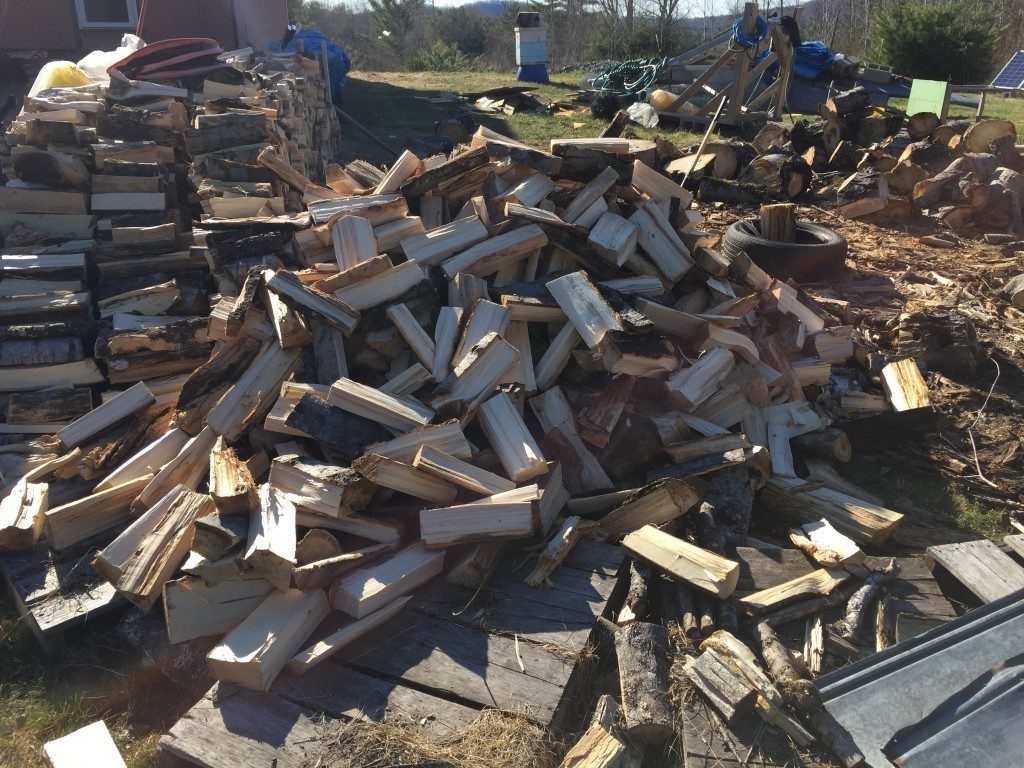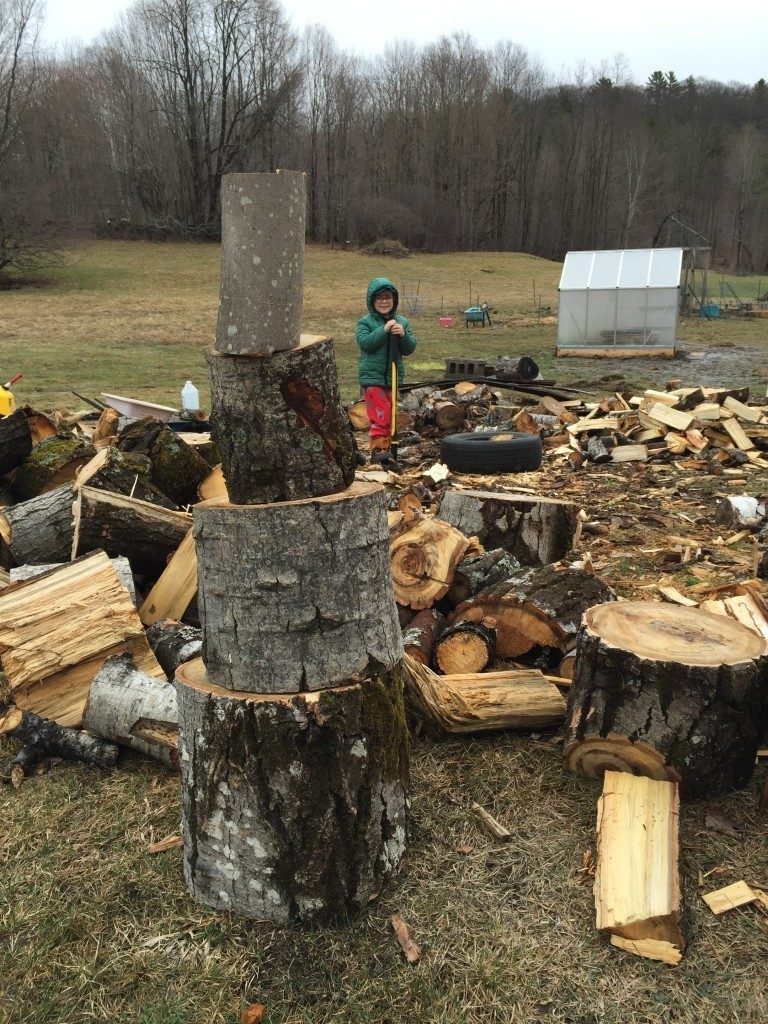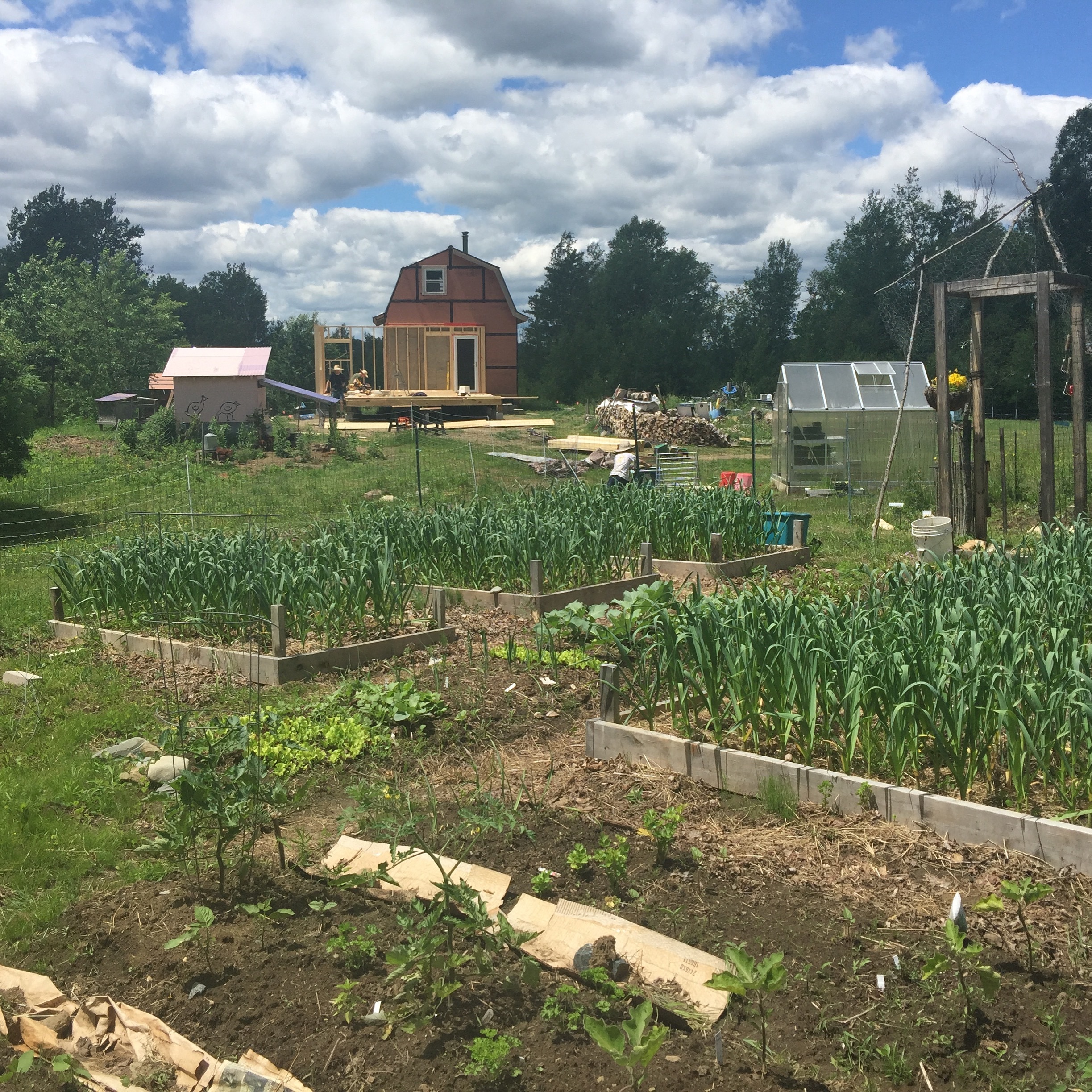After my first series, I realized how much I liked its sequential format. It allowed me to not rush through describing our daily homesteading life. We do so much on a monthly basis, it would be easy for me to get lost in the details, rushing through as fast as I can through what I want to say. This is a monthly/seasonal newsletter of what we have been doing, on our 50 acres of beautiful Vermont, without rushing through it, giving you a piece of our homestead at a normal pace.
Spring took a while to arrive this year. Two years ago, we had a few wildfires around our land in May. This year on the same date, we had one last snowstorm and a few cold enough nights to warrant a fire in our cookstove. Following the snow came endless rain which saturated the ground with water. Tilling the garden and preparing the beds was impossible to do in time. Planting season was delayed by a few weeks, and so were our building plans. We focused our energy on long term plans instead and will be content with whatever the garden gives us this year.
Apiculture
Unfortunately, the bees didn’t make it through yet another harsh Vermont winter. In our 5 years of apiculture, we have never been successful at carrying them through a Vermont winter. We will, therefore, take a break from raising bees.
We recently combined our well with the greenhouse. My husband’s vision is to try adding the bees in that environment to shelter them from the cold winds. We are not quite sure at this point what it will look like, but we reached a point where killing bees was emotionally draining.
In the meantime, we didn’t want to let all this honey go to waste, so on a sunny day, we opened the hive and harvested what they had left behind.
Opening up the hive on a sunny
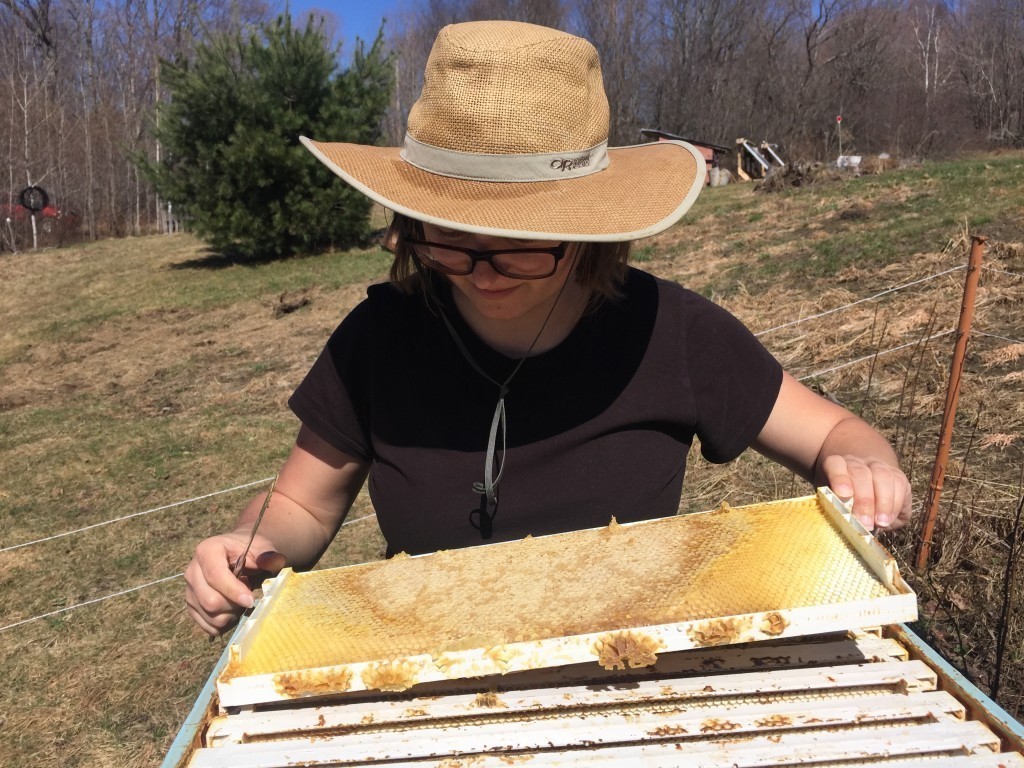
Harvesting honey and wax, with the help of a friend
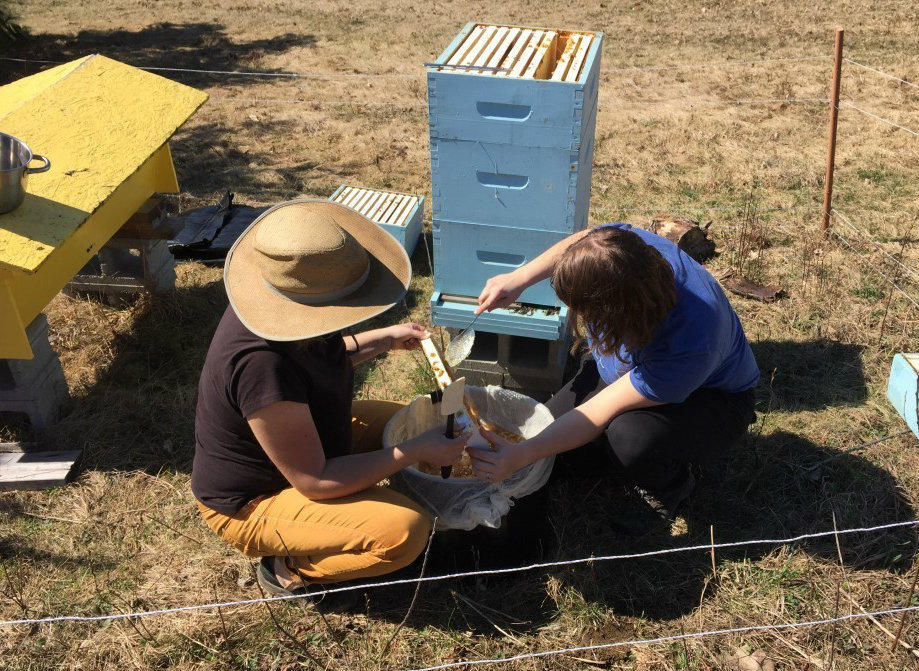
Honey and wax: we let it seep through cheesecloth to get the honey to naturally separate from the wax
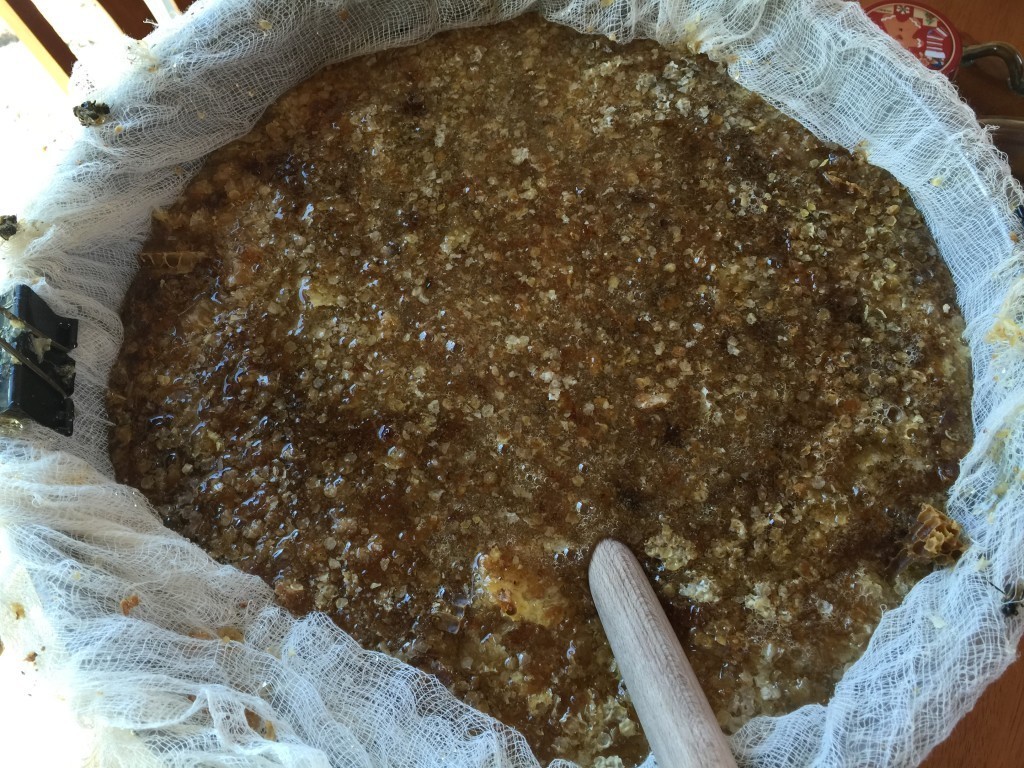
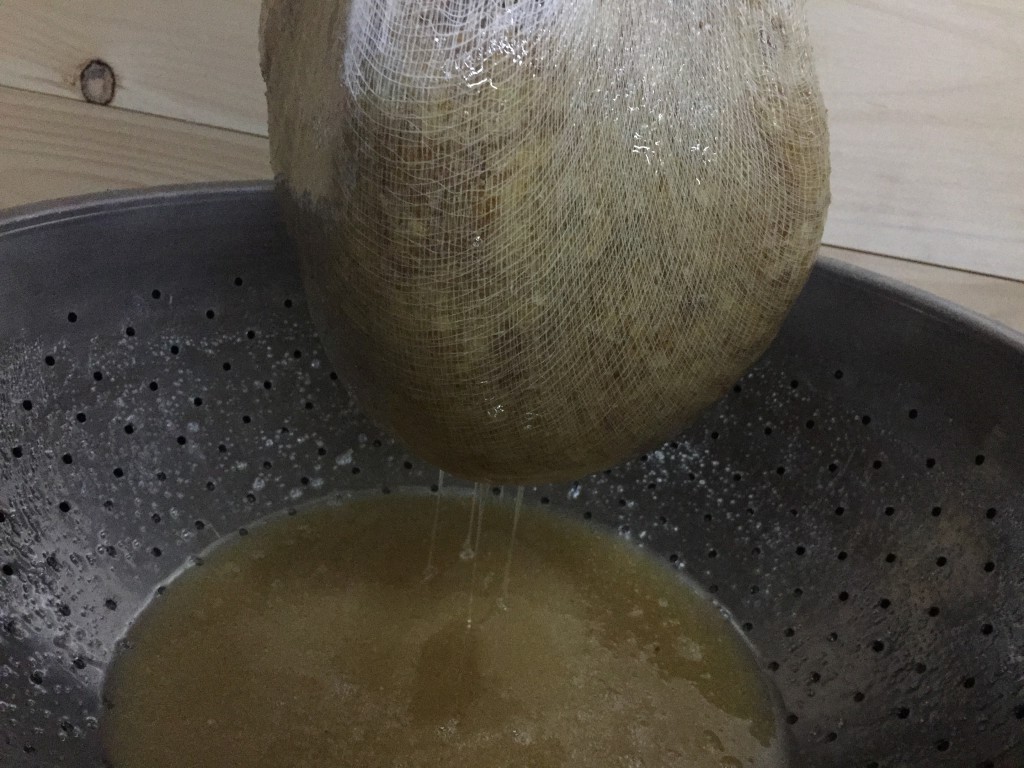
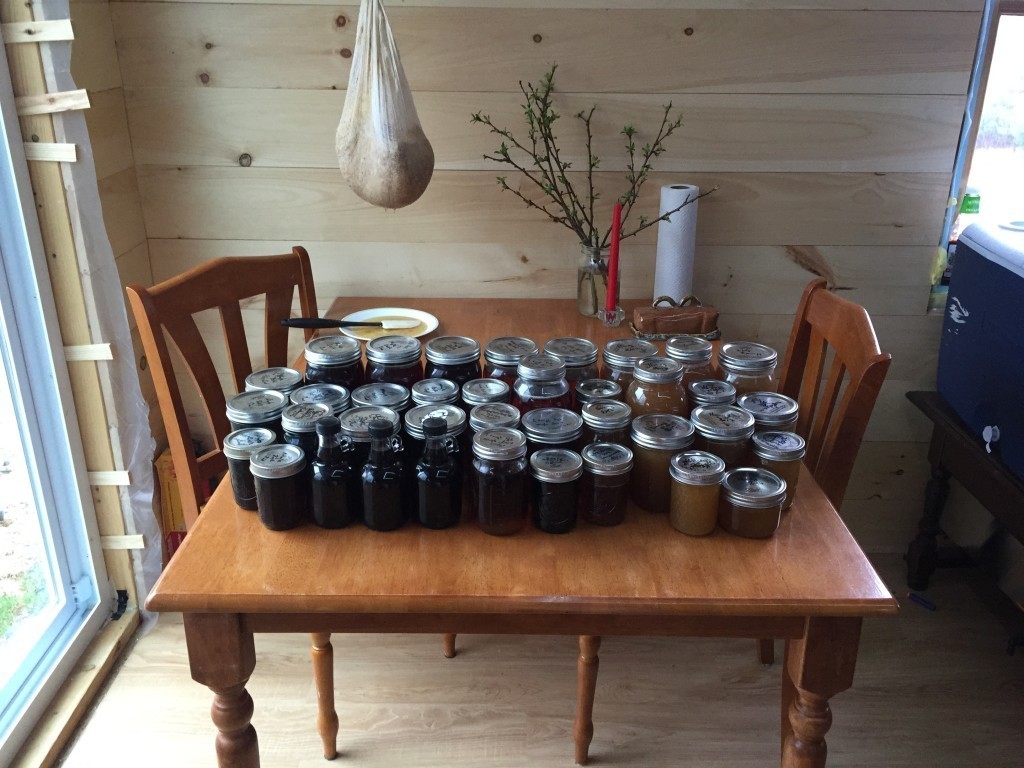
The by-product of the harvest: flaky and light wax. It is not the purest and could be refined. Because I will use it in soapmaking, I skip the refining process, which is very messy and time-consuming.
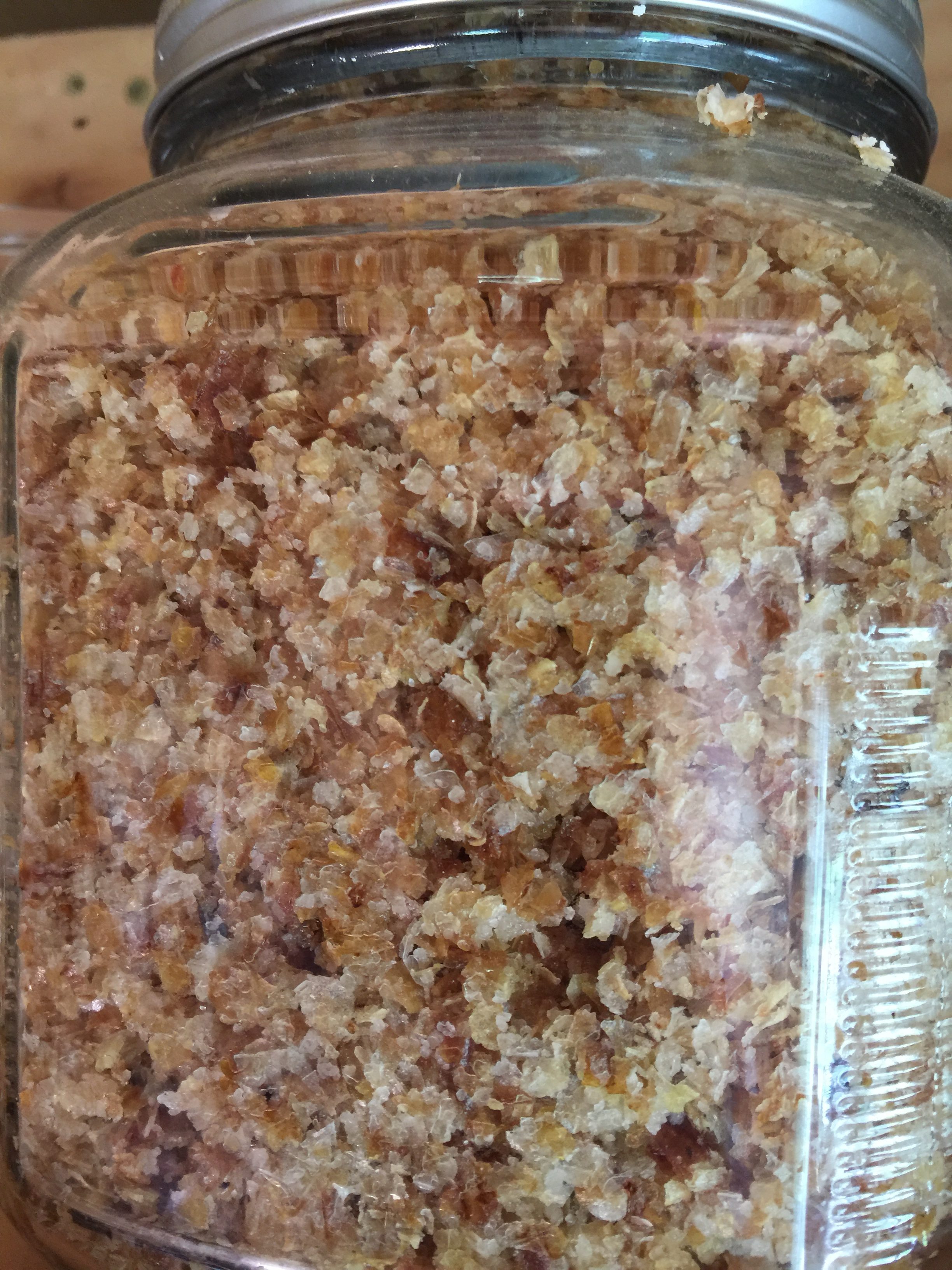
New tool
I struggle with the idea of adding any power tools to our homestead. We have drastically affected our land in barely 3 years of being here, I couldn’t imagine what a tractor would do to further the ‘damage’. The reality is that we are expanding, and we will do the projects we envision to do with or without a tractor. The tractor will simply make things faster and above all, easier on our backs.
The new tractor

Satellite view of our land, a few months before we acquired it.

A year after we moved in: the effect three humans can have on a piece of land…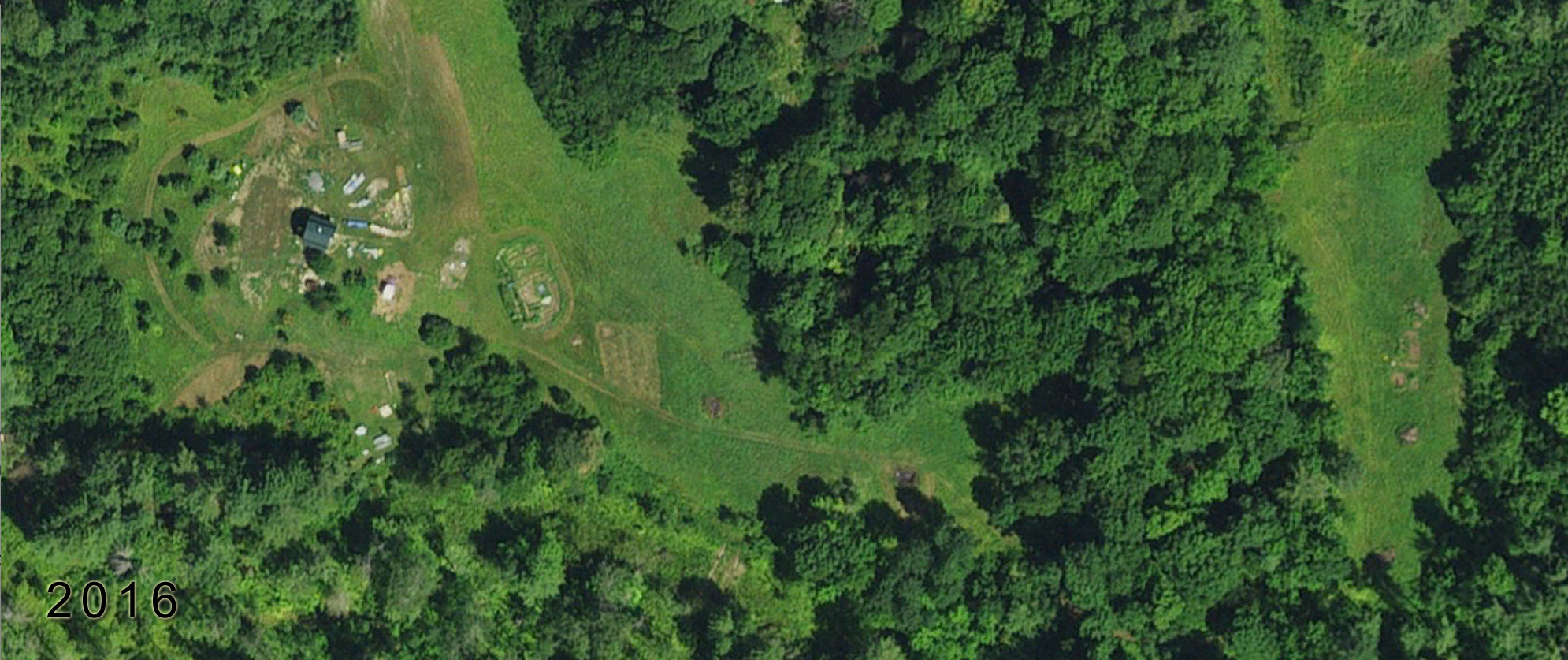
Fruit trees, Raspberries & Blueberries
With the help of the tractor, we planted 83 new raspberry bushes. We also added to our patch of 20 blueberries, making it a total of 48 plants. We also finally transplanted 12 hazelnut trees we received from our friends Dee and Kevin 3 years ago.
New raspberry patch

Blueberry patch, a few currant bushes, and hazelnut trees.
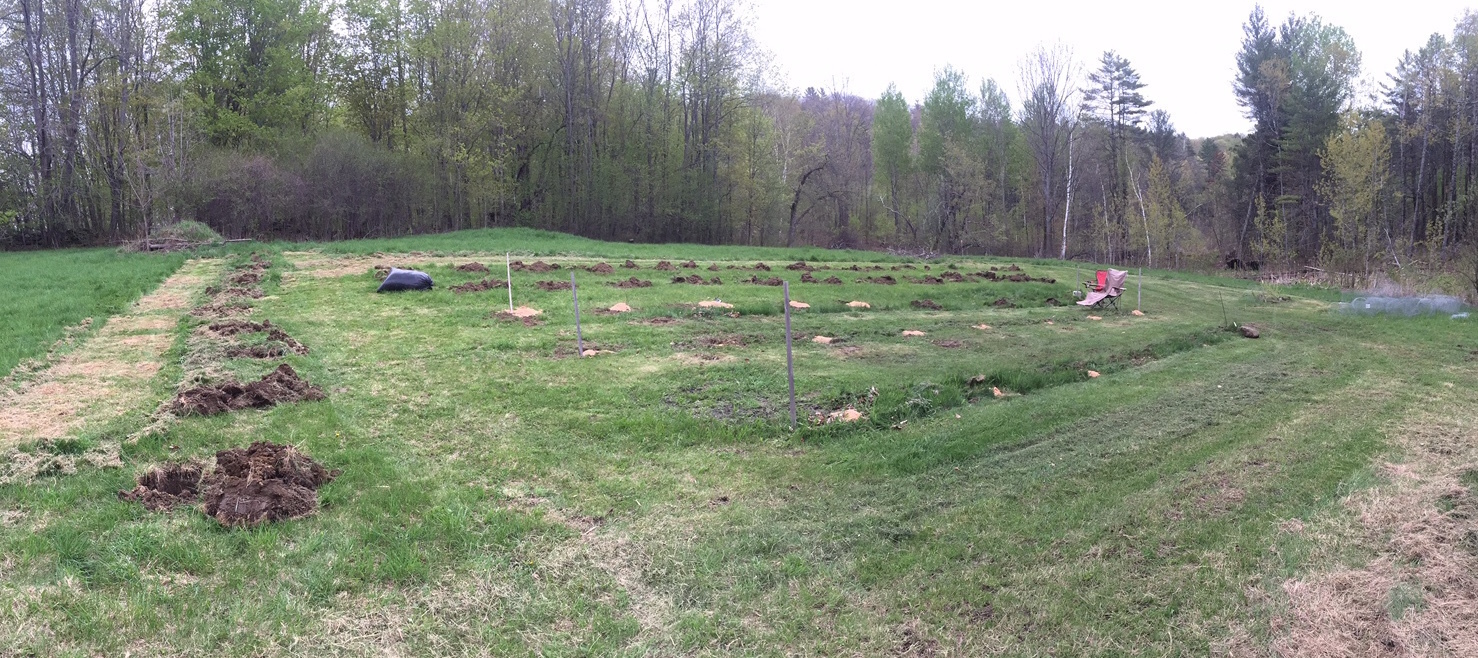
We also added 3 pear trees, 2 plum trees, 3 more apple trees, 2 cherry trees, and 2 apricot trees. Preparing the holes for the fruits trees has been a breeze.
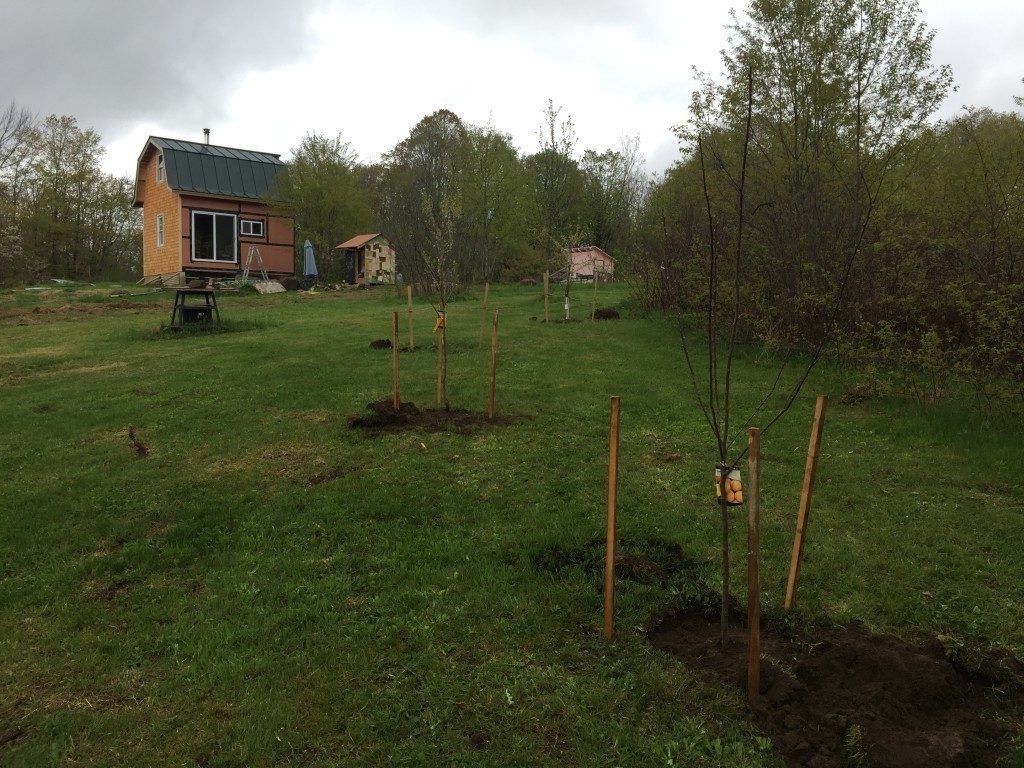
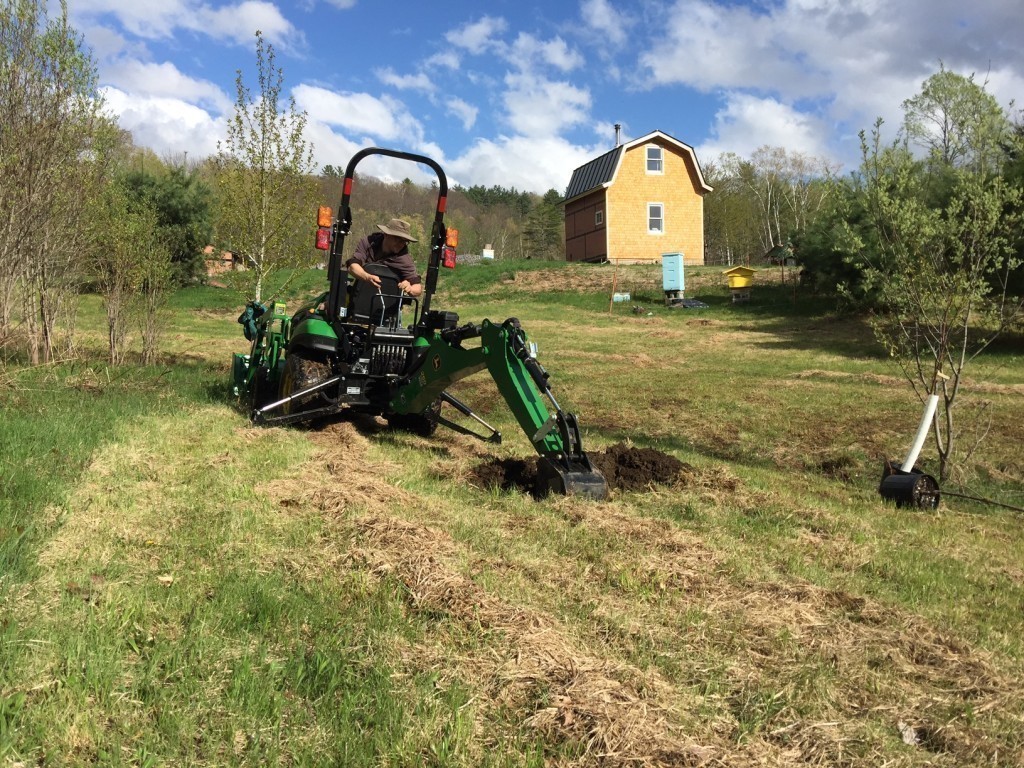
Foraging
I am always looking forward to going in the woods after a long winter, to try to find some morels. But ticks have been really bad this year. Just a walk from our driveway to our house warrants a tick check, having found some after short walks around the house or the garden. I was anxious about going in the woods, with my big pregnant belly, apprehensive to find more ticks than mushrooms. I solved the issue by wearing our bee suit! I went off the beaten tracks, went deeper into the woods, without worrying once about ticks. I found a few morels and made a delicious supper with them.
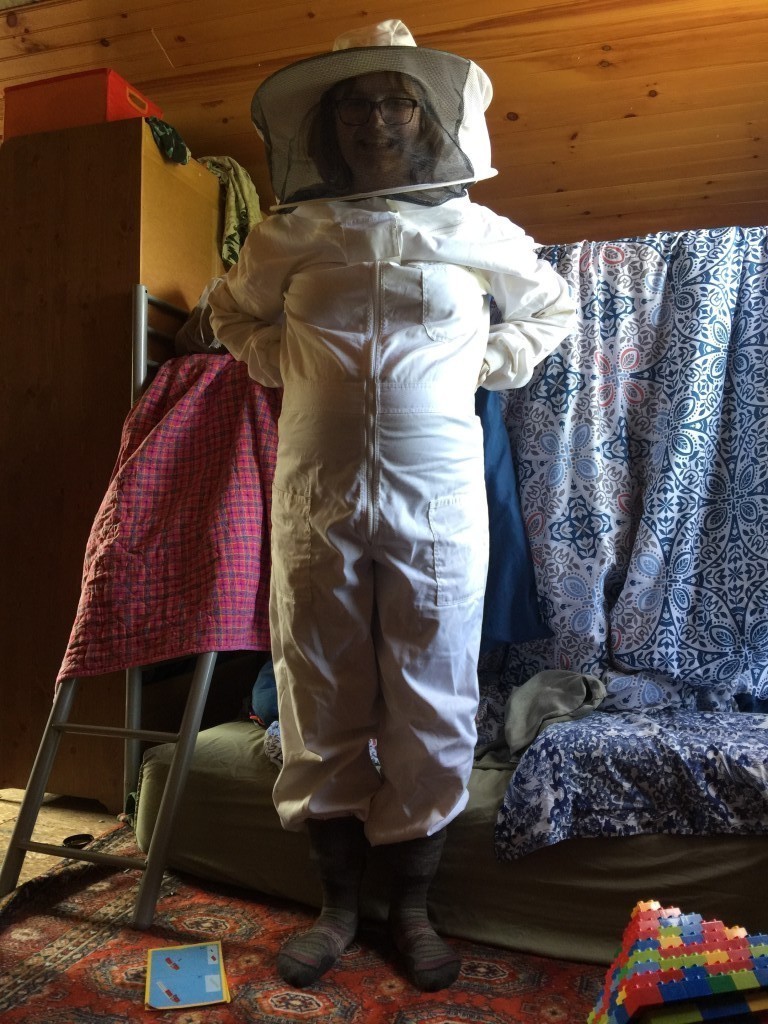
Can you spot them?
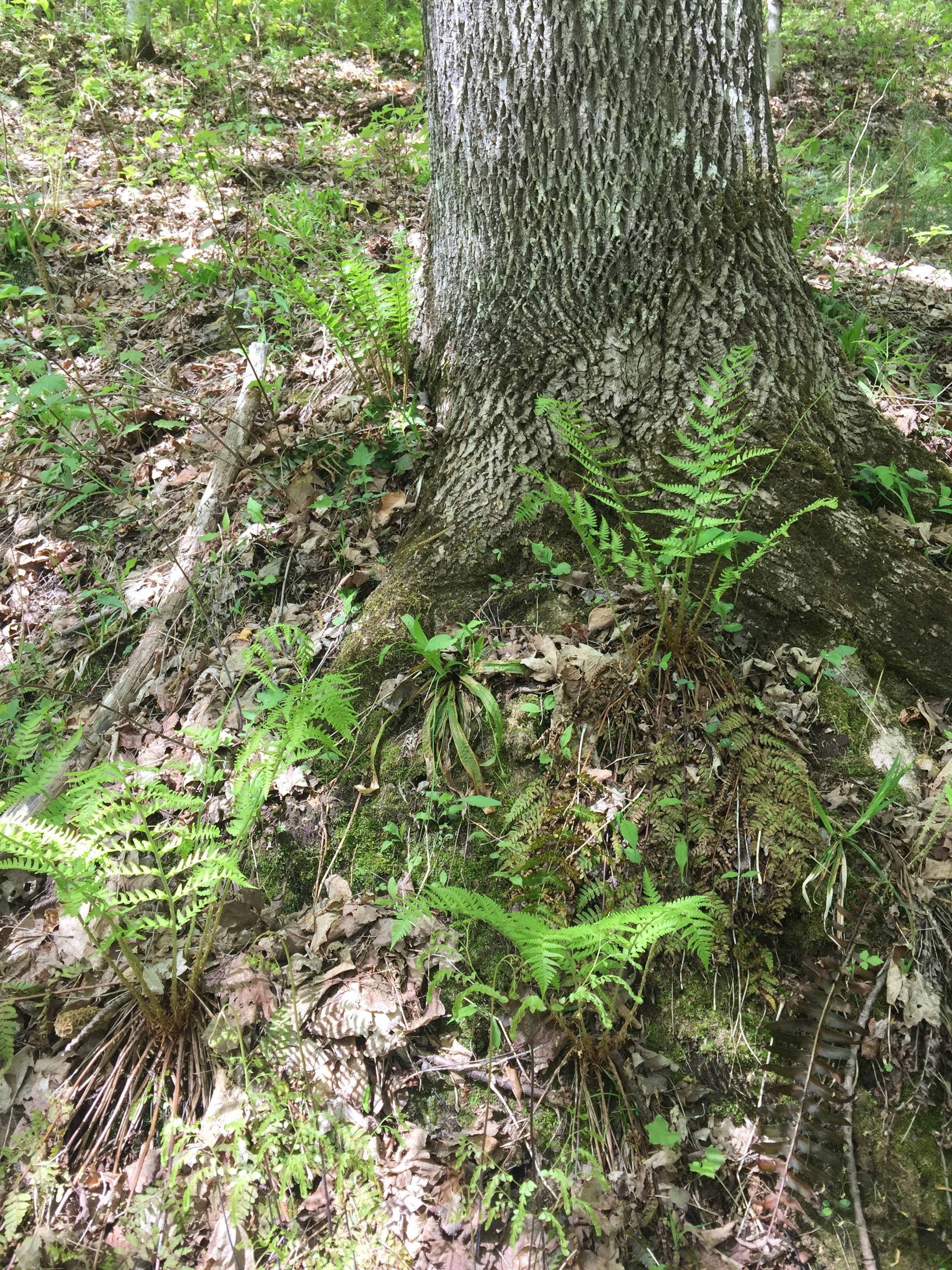

Beautiful morels 
The finished product: fresh homemade pasta topped with a white wine and morel sauce.
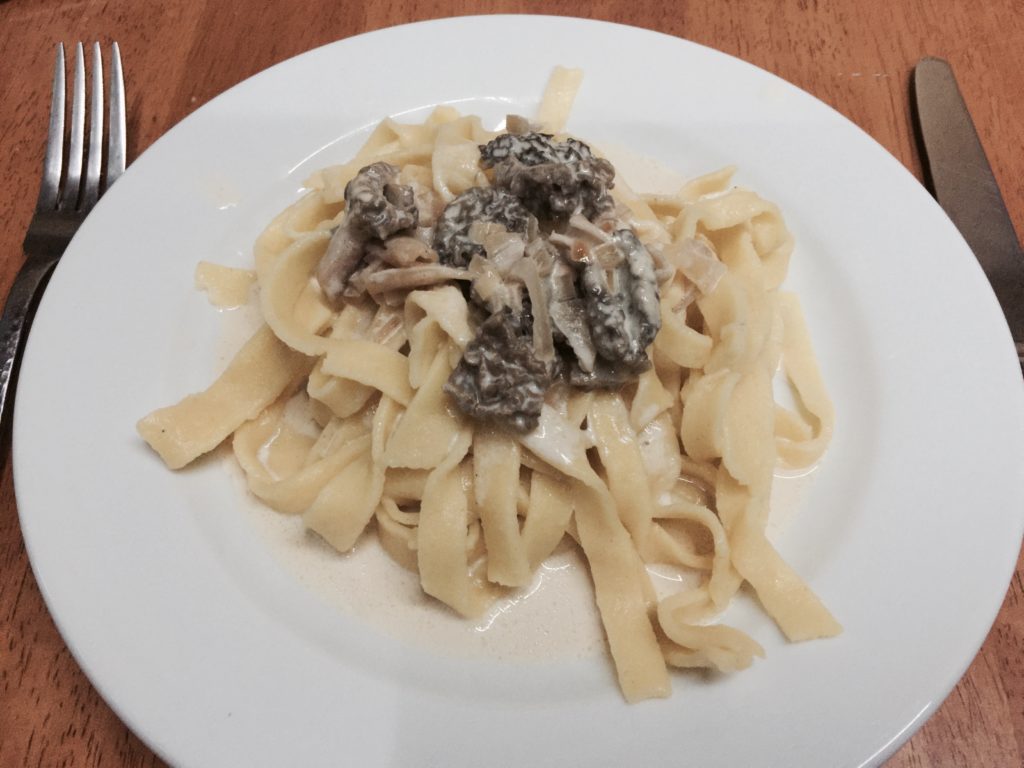
Garden & Greenhouse
I started the gardening project cautiously this year. Baby girl is expected to be born at the end of September, which is the peak of the harvest season in Vermont. I tried my best to be realistic, and refrain from having a big garden. Alas, my craving for dirt under my feet, dirt under my fingernails got the best of me. The garden is actually bigger than last year: I added an extra row and planted to my heart’s content. I am in there every day, weeding and admiring plants trying their best to thrive. We had a lot of rain, I am happy to have done raised beds, despite the amount of aches it brought (I hope my midwife is not reading this).
Greenhouse hosting our plants and serving as a well-house as well
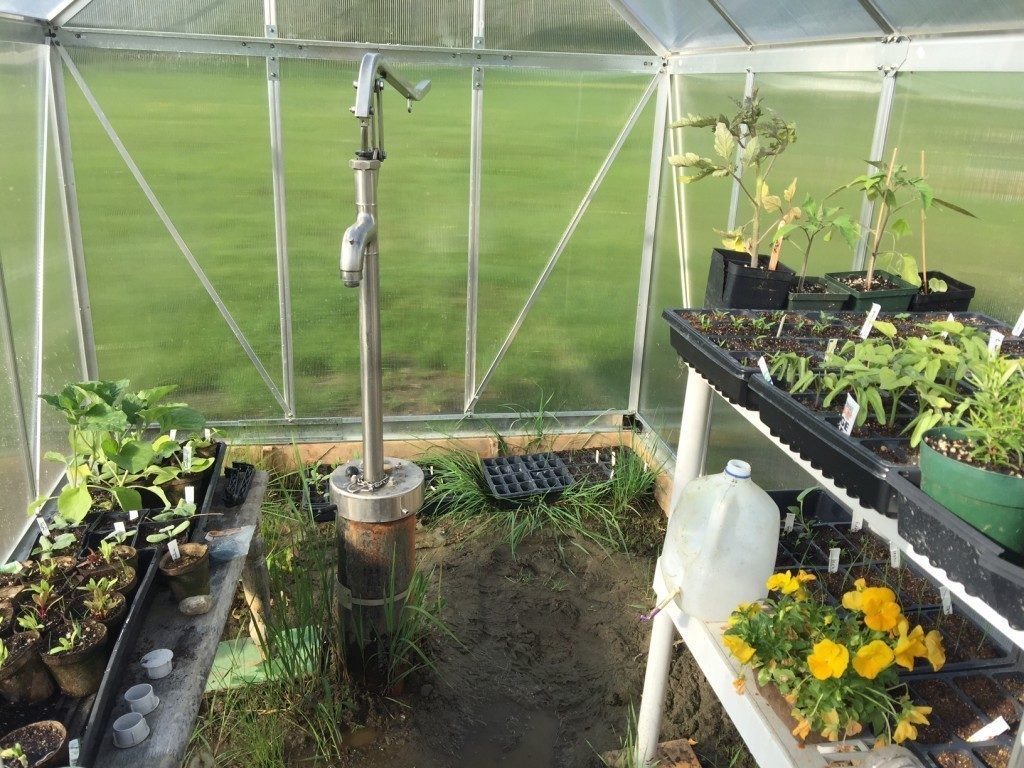
Raised beds allowed for the plants to not stand in water. It was a very wet spring!
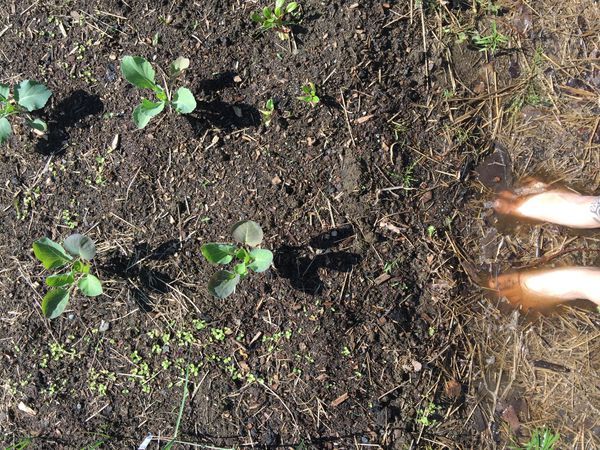
600 heads of garlic, and a small part of the garden.
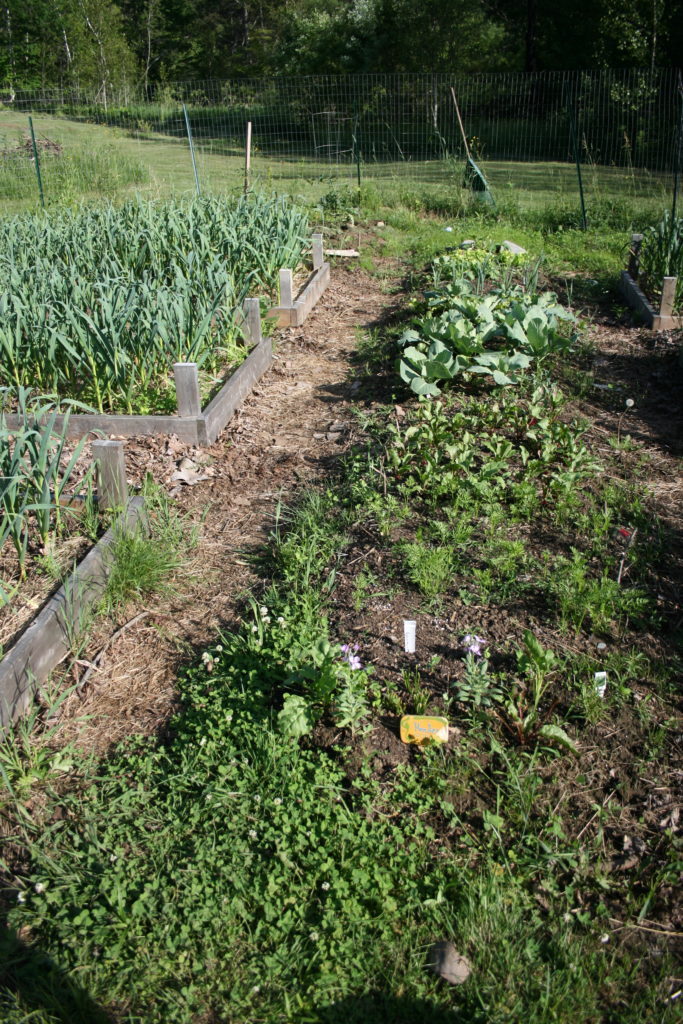
Despite our best effort to only plant one clove every 3-5 inches, we still ended up with more plants per spots. We made a few soups and used them in salads (they taste a bit milder than green onions).
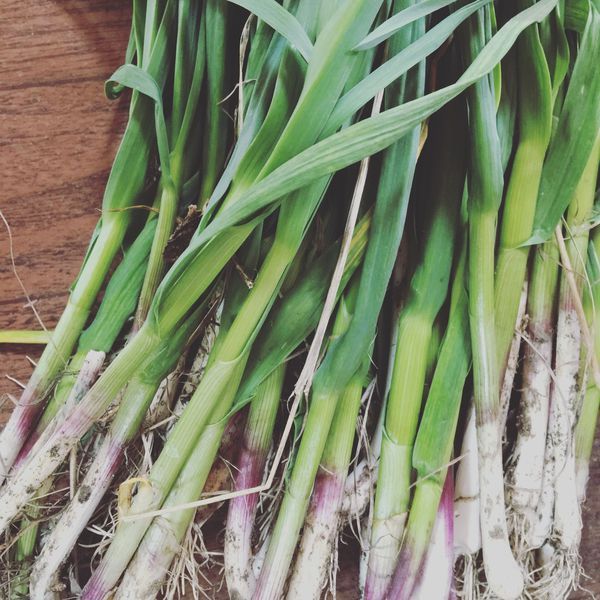
Bird watching
Adding the huge window next to our dining table has been the best feature in our house so far. We eat with what we call our “giant nature TV”, where birds, sometimes squirrels, come eat. Having them so close to us has brought us much fun and many learning opportunities.
Only a few feet from our dining table
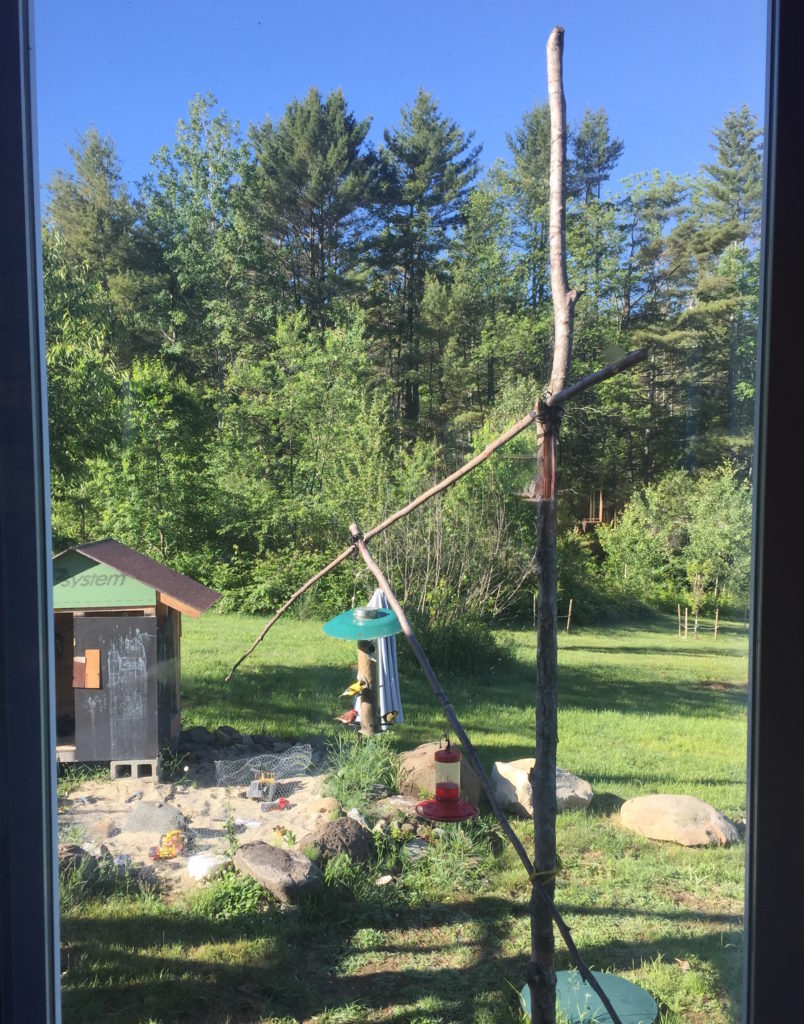
Our annual batch of baby Robins, a few yards from the house
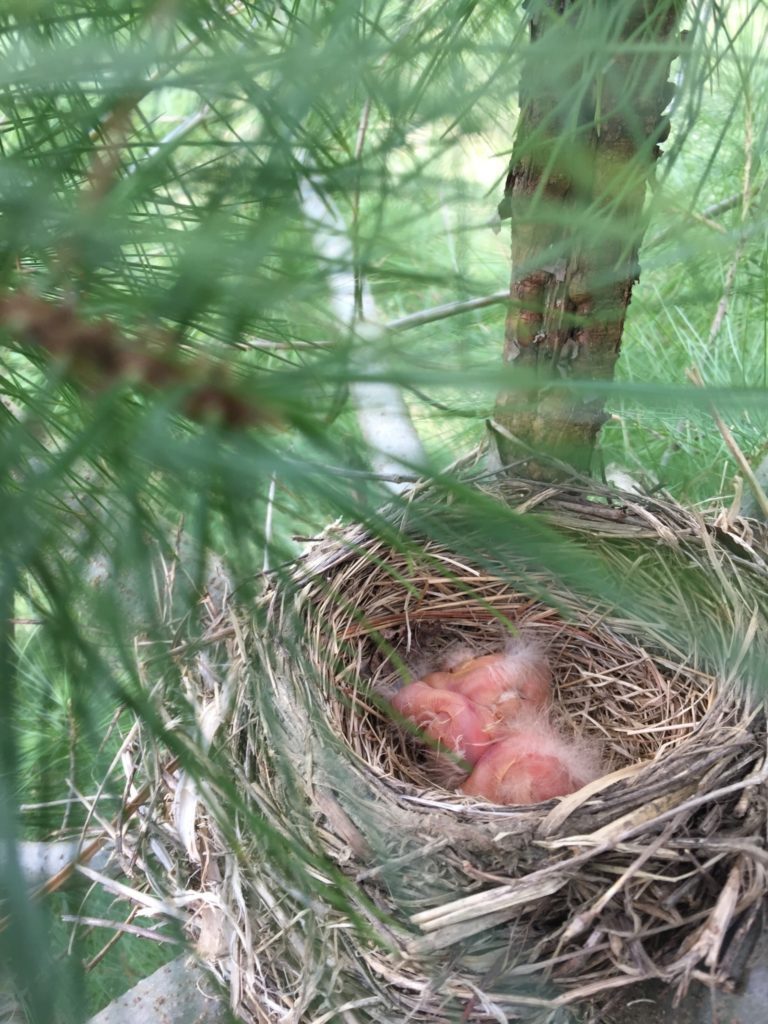
They grow up so fast!
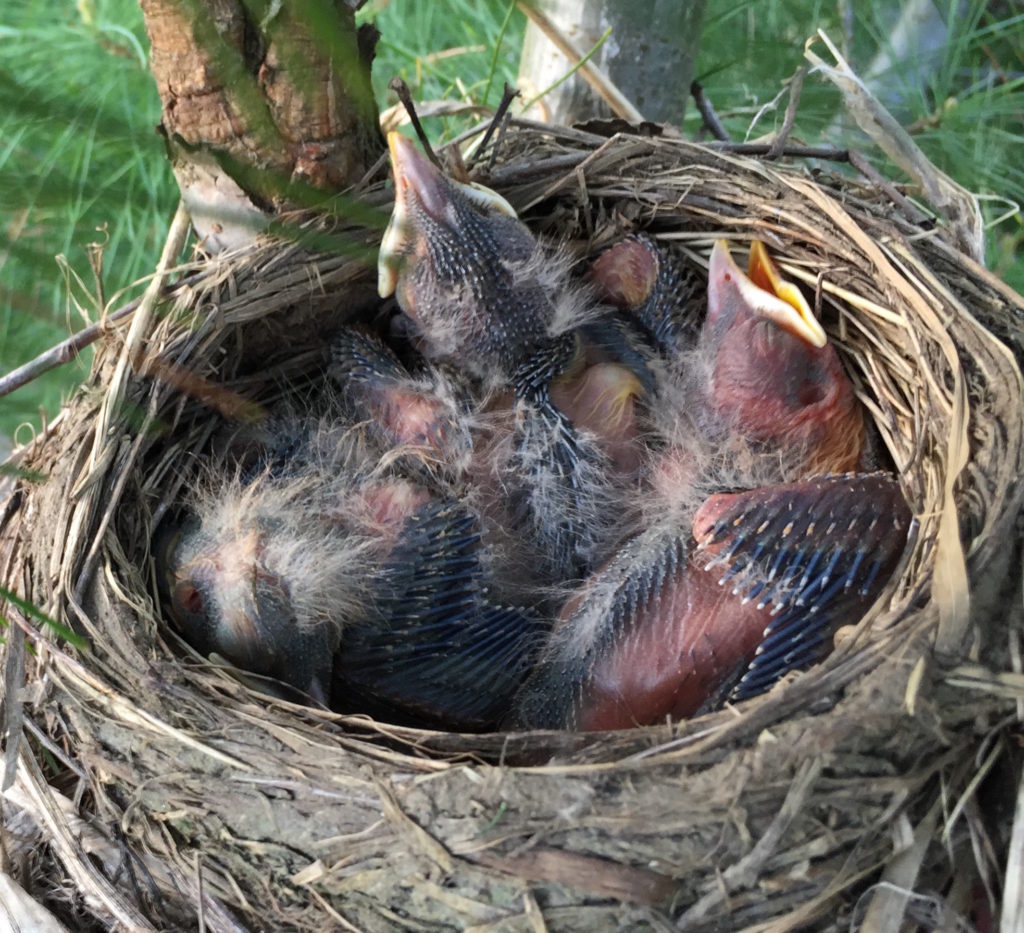
Building
Trees and berry bushes are not the only thing going in the ground. We also planted piers for the new addition on May 22! I am working on a blog post about just this aspect of homesteading. We are again building all of it ourselves, with the help this time from my brother-in-law who is spending two months here to help us out.
14 piers in the ground in one day: it was a long day of work
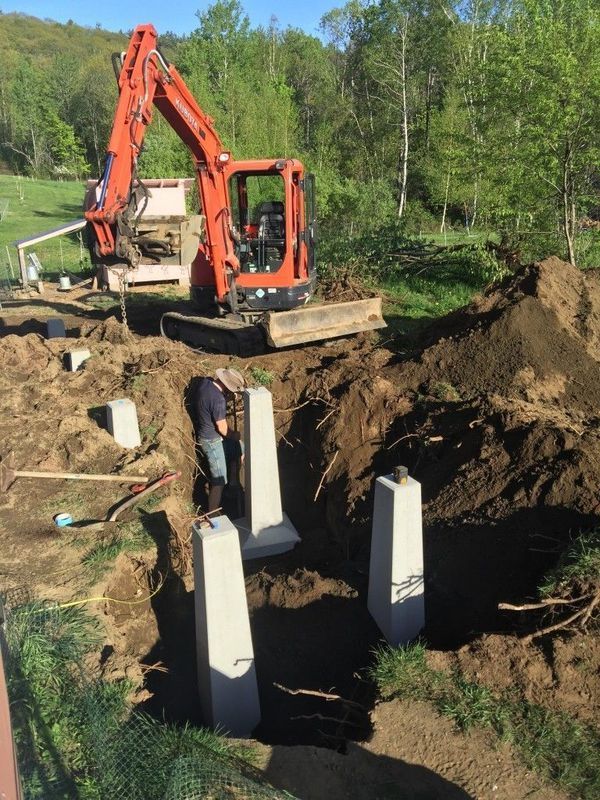
All the piers are in and covered.
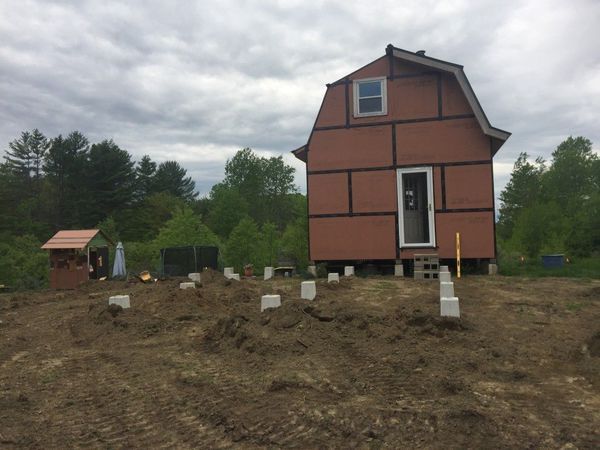
No more tiny house for us!
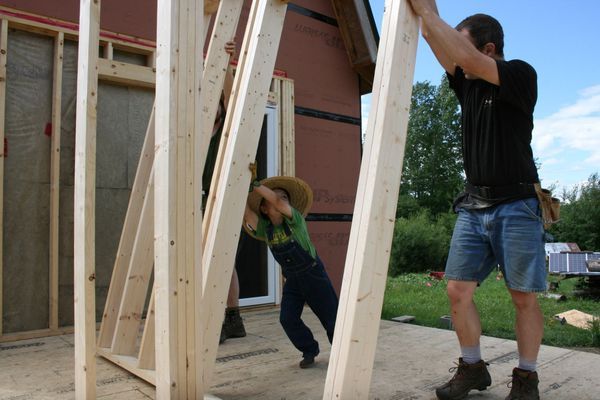
The neverending wood chores
I could talk about wood all day, in all my blog posts. We think and talk about wood constantly. There isn’t a time of the year where we can sit back and not do any wood chores. We harvest wood often, we split a little bit at the time, and we stack. And we repeat this operation all year long.
Even during construction, when all our attention is focused on the new building, I am getting those little extra cuts, and turning them into kindlings to start a fire.
Our son still enjoys helping, and his enthusiasm and strength are more than welcome, making it a family chore when we get to spend some time together, doing a task we all enjoy.
